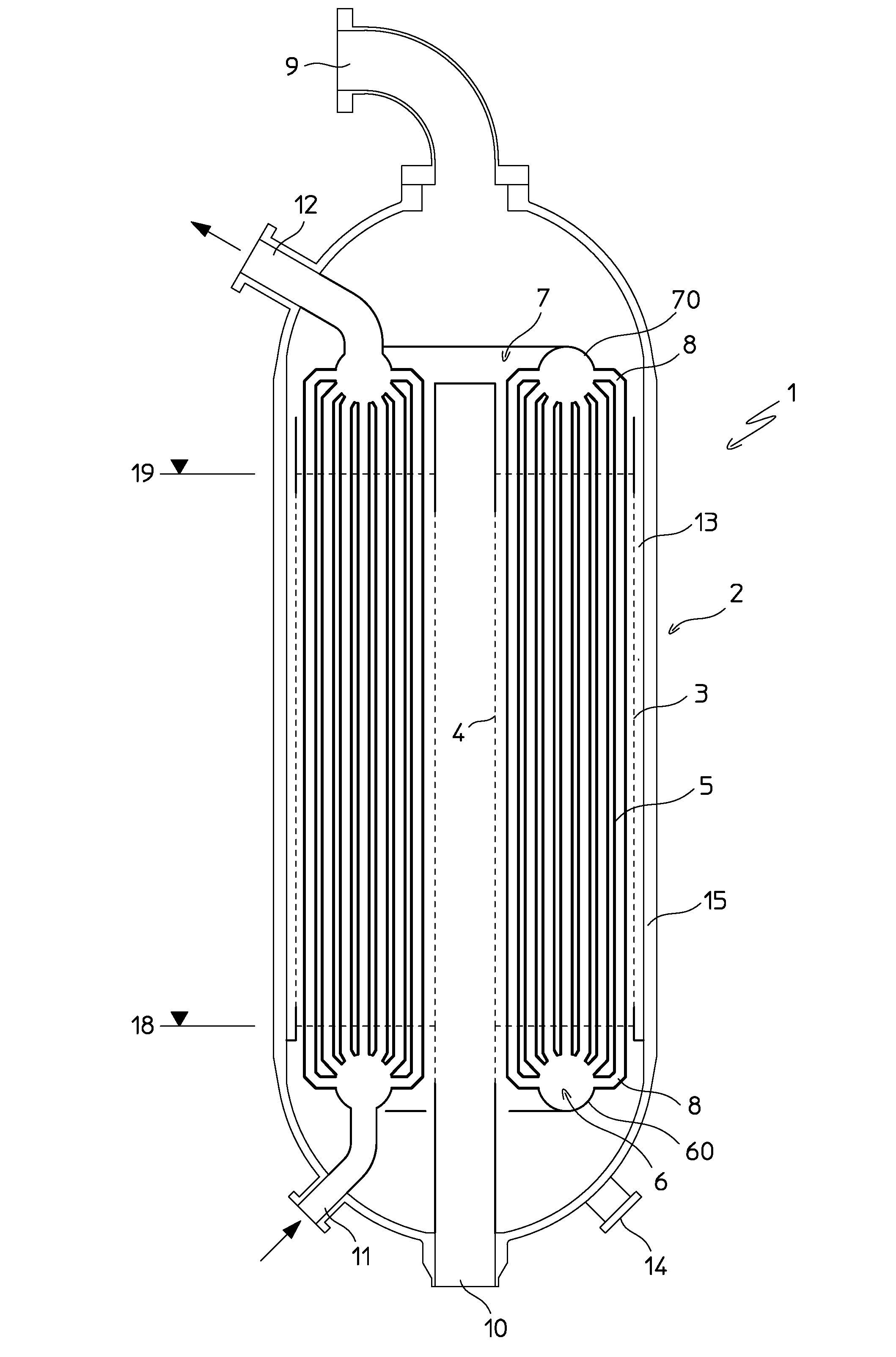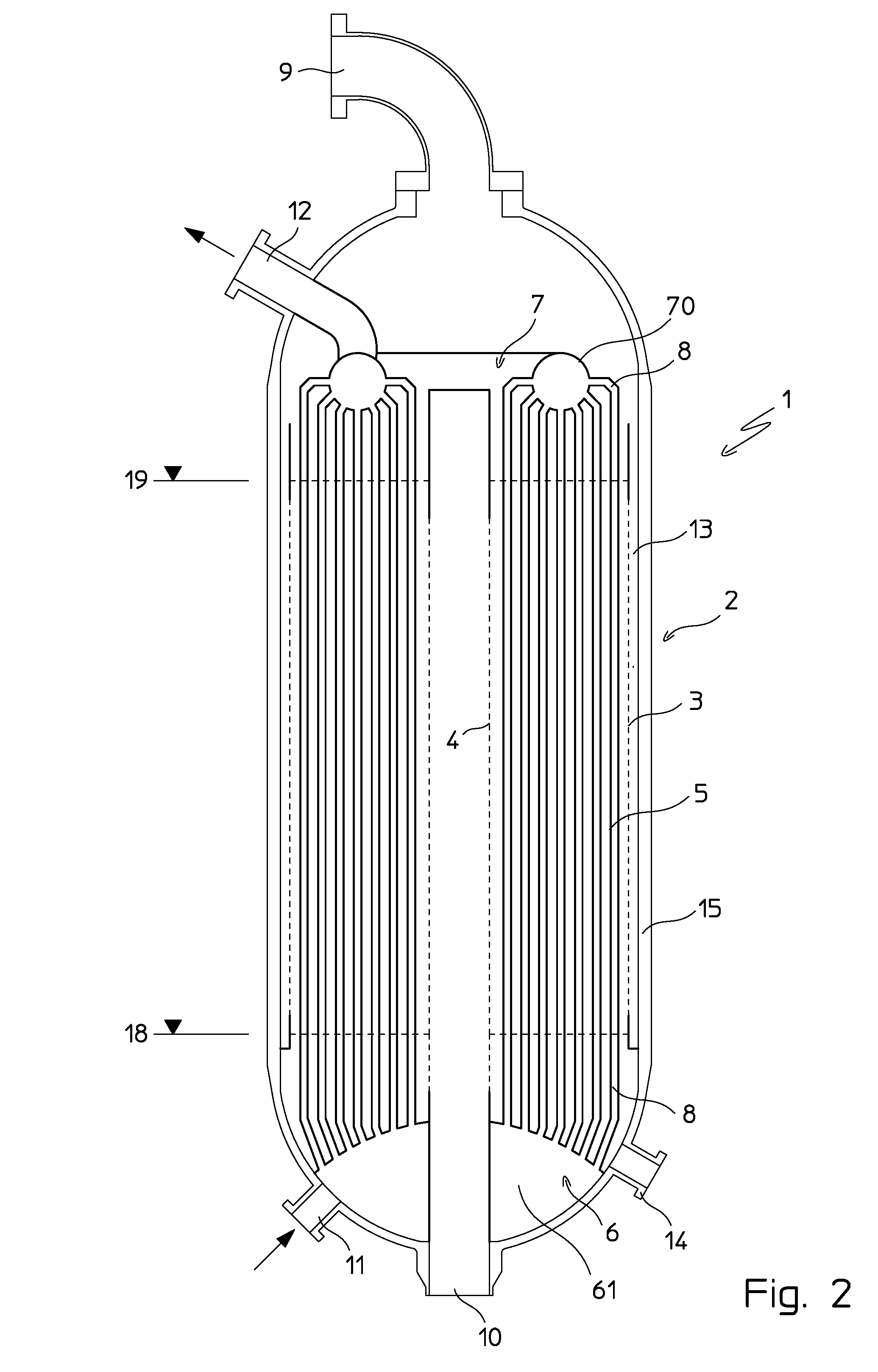Isothermal tubular catalytic reactor
a catalytic reactor and tubular technology, applied in the field of isothermal tubular catalytic reactors, can solve the problems of laborious filling and emptying operations, rapid deterioration of catalysts, and non-uniform flow amongst, and achieve the effects of facilitating filling and emptying of catalysts, and reducing the number of clogging
- Summary
- Abstract
- Description
- Claims
- Application Information
AI Technical Summary
Benefits of technology
Problems solved by technology
Method used
Image
Examples
Embodiment Construction
[0039]FIG. 1 shows a vertical reactor 1 comprising a catalytic bed 2 and a tubular heat exchanger immersed in said catalytic bed.
[0040]The catalytic bed 2 is contained in a substantially annular space between a cylindrical wall 3 and a central tube 4 coaxial with said wall 3. Both the cylindrical wall 3 and the central tube 4 have at least part of the surface perforated so as to allow the passage of the reagents and gaseous products. The catalytic bed is supported by a basket (not shown) according to the art known per se. The lines 18 and 19 indicate the volume filled with catalyst during conditions of normal use; below the line 18 there is usually inert material.
[0041]The tubular heat exchanger comprises essentially a straight tube bundle 5. The tubes 5 are housed inside the annular space between the wall 3 and the central tube 4.
[0042]The ends of the tubes are connected to two bodies 6 and 7 which act as a distributor and a header for a heat exchange fluid. Each tube 5 is connecte...
PUM
| Property | Measurement | Unit |
|---|---|---|
| length | aaaaa | aaaaa |
| circumferences | aaaaa | aaaaa |
| shape | aaaaa | aaaaa |
Abstract
Description
Claims
Application Information
 Login to View More
Login to View More - R&D
- Intellectual Property
- Life Sciences
- Materials
- Tech Scout
- Unparalleled Data Quality
- Higher Quality Content
- 60% Fewer Hallucinations
Browse by: Latest US Patents, China's latest patents, Technical Efficacy Thesaurus, Application Domain, Technology Topic, Popular Technical Reports.
© 2025 PatSnap. All rights reserved.Legal|Privacy policy|Modern Slavery Act Transparency Statement|Sitemap|About US| Contact US: help@patsnap.com



